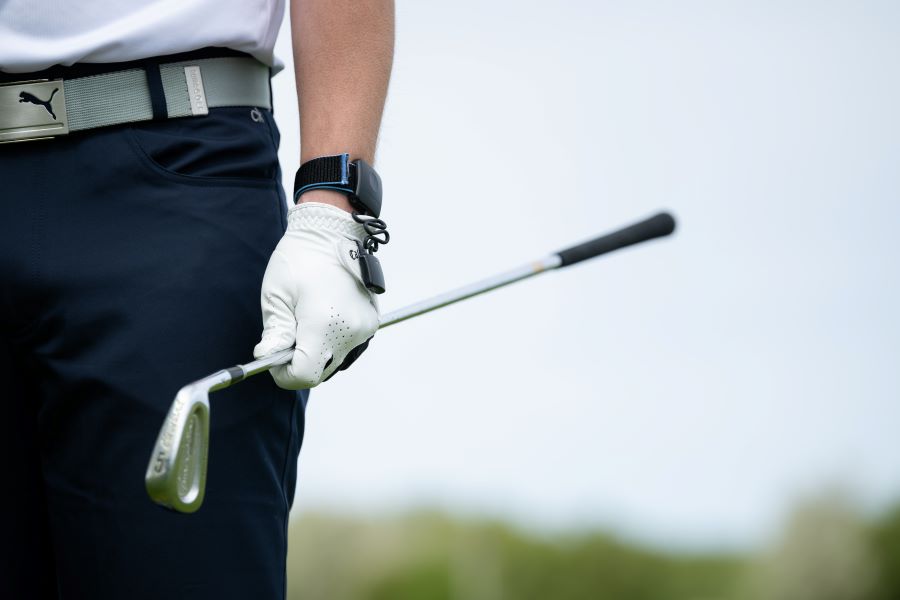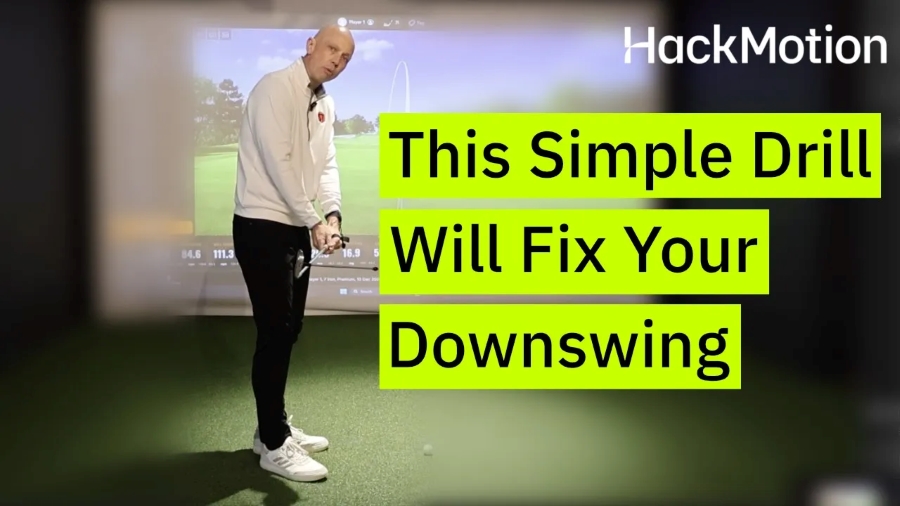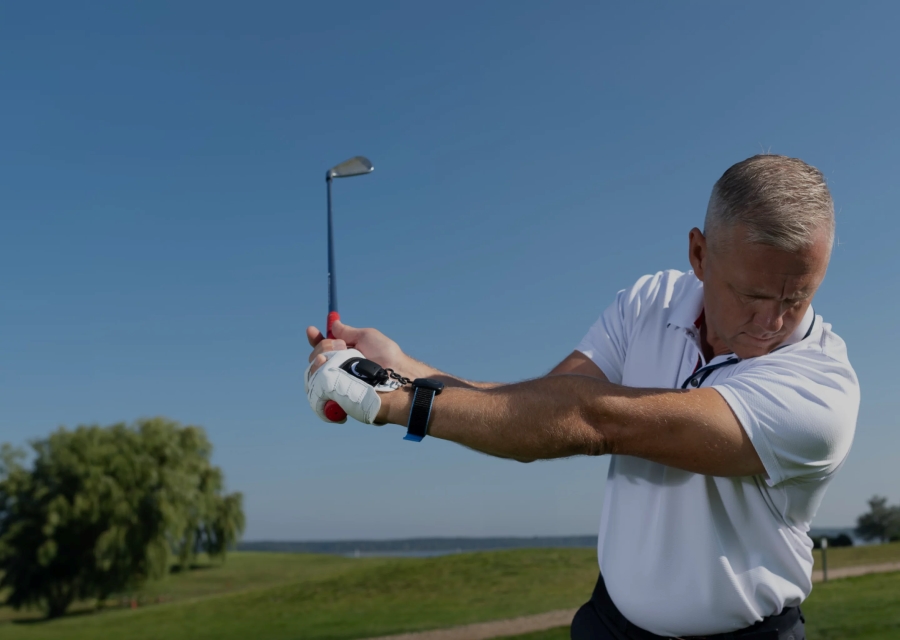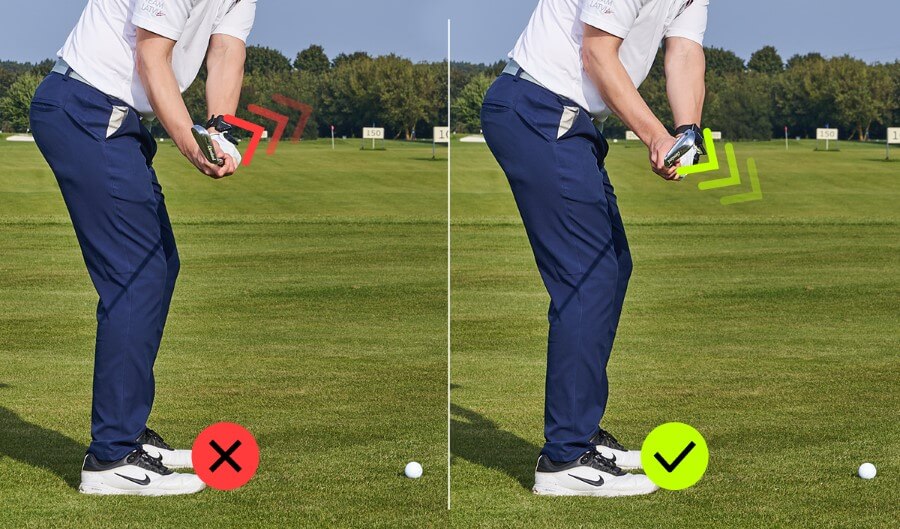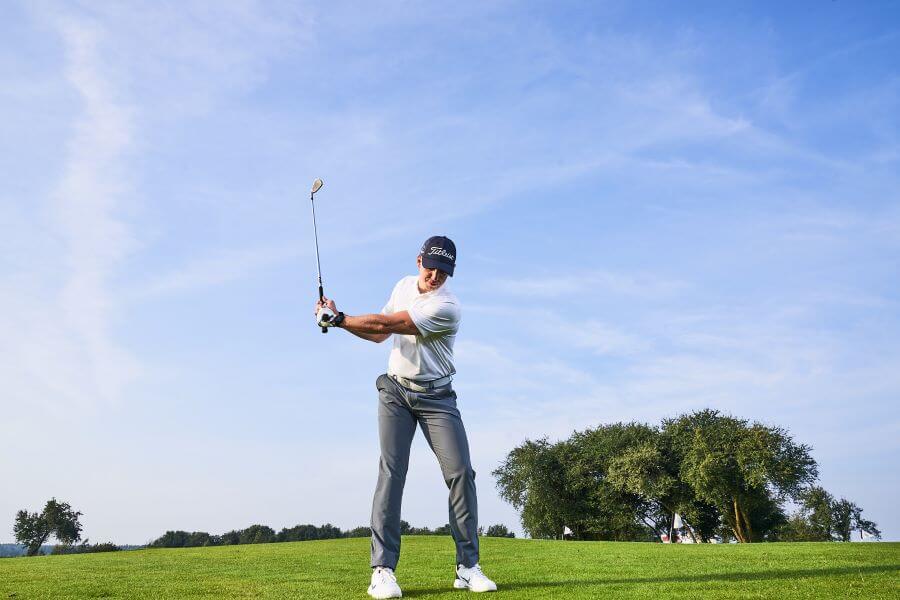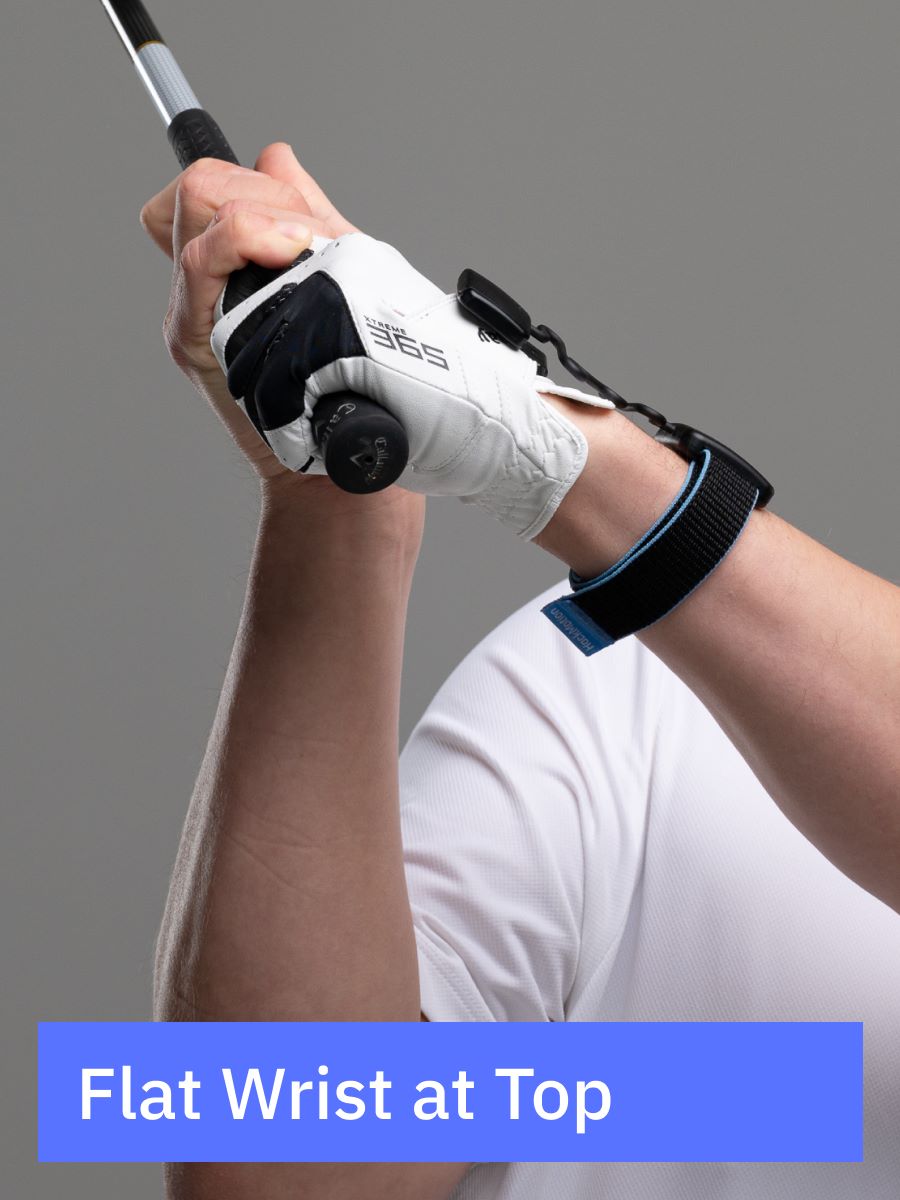Breaking Down Dustin Johnson’s Golf Swing: The Impact of Wrist Motion
There is something special about the way Dustin Johnson plays golf. He gets incredible ball speed, compresses the ball in a way that most golfers are not able to, and has the short game to follow it all up.
Maybe you have noticed that Dustin’s swing looks a little different than some other players, and the major reason behind this is his wrist mechanics.
At HackMotion we have analyzed more than 100,000 golf swings to see what is common, what works to hit a great golf shot, and what doesn’t.
I’ll show you what Dustin Johnson does in his golf swing and what you can learn from it to make your swing better.
Copying Dustin Johnson’s Swing isn’t Easy
Slight changes in wrist motion can have a significant impact on the swing. However, when you look at the motion that Johnson is making it is anything but slight.
In this video, UK Top 50 Golf Coach Alistair Davies tries to replicate DJ’s swing pattern and finds out just how hard it is.
Dustin Johnson’s Wrist Data (What Can We Learn?)
Dustin Johnson’s wrist data is most impressive to take in when it’s compared to the averages seen across players, and when compared to your own game. I’ll show you Johnson’s wrist data, my own wrist data, and some averages that we have collected for more than 100 000 shots.
It’s easiest to break this down into the different types of wrist motion golfers have in their swing, starting with Wrist Flexion (-)/ and Wrist Extension (+).
Wrist Flexion (-) / Extension (+)

Wrist flexion and extension is also referred to as bowing (flexion) and cupping (extension) of the wrists.
- Address – DJ has an average amount of extension – 25 degrees.
- Top of the Backswing – reaches -45 degrees of flexion. He has moved towards flexion 70 degrees when compared to address! (25+45=70)
- Impact – still very flexed, but much less than he was at the top, only -21 deg.

Backswing: change from address (+25 deg) to top (-45 deg) = -70 degrees.
As expected, DJ is flexing (bowing) his wrist a lot more than average tour players, who keep flexion more constant from address to top. We have never seen a pro player with this much change during the backswing
Downswing: change from address (+25 deg) to impact (-21 deg) = -46 degrees.
DJ has added more flexion compared to typical tour players, who add around -15 to -30 degrees of flexion (relative to address). This is explained by how much his hands are forward at impact.
What can you learn from this?
The main takeaway is the interesting contrast of DJ’s wrist motion when compared to a typical pro player who has much less change in his extension/flexion data. Typically tour players keep their extension quite constant during the backswing and we recommend that most players follow this example.
We do not recommend you to copy this pattern since it is so extreme. The release motion patterns can be non-standard as long as they are consistently repeated.
Below is a graph view of what DJ’s wrist motion would look like as far as extension and flexion are concerned. We see the same things here, starting with large amounts of extension, adding flexion, removing some flexion, and then adding it back in again.

Compared to Averages
At HackMotion we have been collecting quite a bit of data from users who like to share their wrist positions at address, top, and impact.
With over 100,000 swings analyzed here are the averages for flexion and extension:
| Player Handicap | Flex at Address | Flex at Top | Flex at Impact |
|---|---|---|---|
| Less than 10 | 19.3 | 14.5 | 3.6 |
| Between 10-25 | 19.5 | 17.0 | 9.0 |
| More than 25 | 18.8 | 24.2 | 10.7 |
When you look at these averages compared to Dustin Johnson the thing that sticks out the most is the amount of flexion at the top. He has nearly 45 degrees of flexion compared to a low handicapper that would have close to 14 degrees of flexion at the top of the swing.
DJ needs some flexibility to be able to get to this position, and it’s certainly not a good idea to copy him, but instead learn why he does this and how it can improve his overall consistency.
Radial (+) / Ulnar (-) Deviation

Next let’s look at radial and ulnar deviation (wrist cocking and uncocking). The more radial the player adds, the more the blue graph line goes upwards.
The more ulnar the player adds, the more the blue graph line goes downwards.
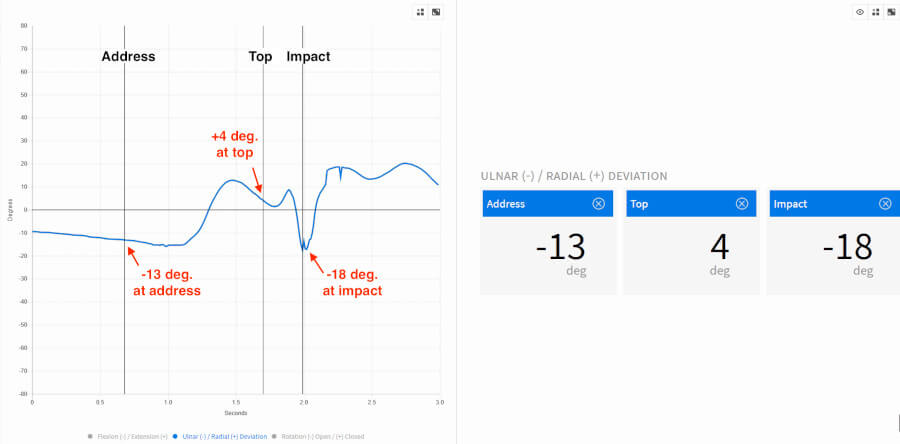
- Address – DJ has very little ulnar deviation – 14 degrees.
- Takeaway – he initially adds more radial deviation but then, towards the end of the backswing actually removes it. This is caused by his extreme wrist flexion. Try this for yourself with the HackMotion on; you can not add radial and flexion at the same time.
- Top of the backswing – 4 degrees of radial deviation, quite a neutral position.
- During downswing – DJ removed radial deviation but has a little increase in the mid-downswing.
- Impact – slightly more ulnar (uncocked) than he was at address, -18 degrees.
Compared to Averages
With over 100,000 swings analyzed, here are the averages for radial and ulnar deviation:
| Player Handicap | Radial/Uln Dev at Address | Radial/Uln Dev at Top | Radial/Uln Dev at Impact |
|---|---|---|---|
| Less than 10 | -26.3 | 8.8 | -27.0 |
| Between 10-25 | -25.6 | 7.4 | -26.4 |
| More than 25 | -24.9 | 5.6 | -27.1 |
Rotation Clockwise (+) / Counter-Clockwise (-)
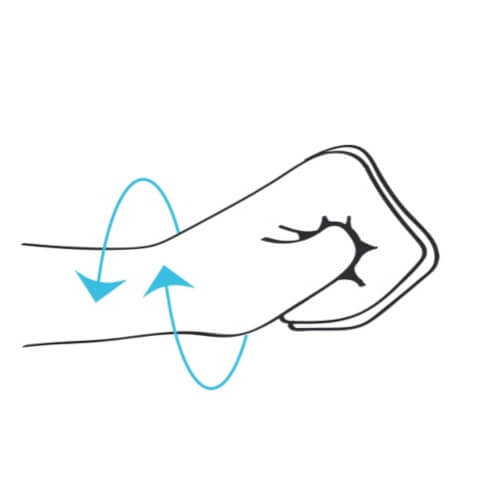
Next let’s look at rotation in the wrists.
The more the player rotates the lead wrist clockwise (pronation direction), the more the purple graph line goes downwards. (This is a right handed player).
The more the player rotates the lead wrist counter-clockwise (supination direction), the more the purple graph line goes downwards.
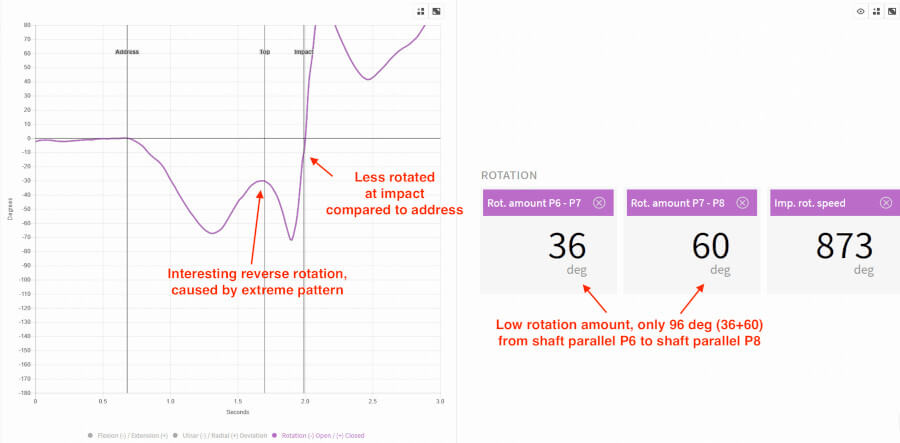
- Address – always zero, this is reference position.
- Takeaway – DJ has a very unusual pattern. Mid-backswing, he is starting to rotate his wrist counter-clockwise. Usually, players keep rotating clockwise. This is caused by DJ’s extreme pattern of wrist flexion.
- During the downswing – DJ starts again rotating clockwise.
- Impact – he is less rotated than he was at the address.
Overall, DJ has little rotation during his release since he releases more in the extension direction. His rotation speed is also low, taking into account this is a driver; usually, it would be over 1000 deg/sec.
DJ has a very unusual rotation pattern because of how extreme his flexion is.
All Data in One Graph
For those interested in deeper analysis, here is a graph with all the data in one image. It’s important to remember that there is no ideal or perfect wrist position. In fact, it’s entirely fine to have a unique position that works specifically for you.
DJ is a perfect example of how golfers can be creative when it comes to wrist position but how consistency is the most important thing. In addition, flexion at impact is again going to be very important.
Golfers that can get their clubface into a flexed position a little sooner in the backswing have a much greater chance of hitting the golf ball with a square clubface.
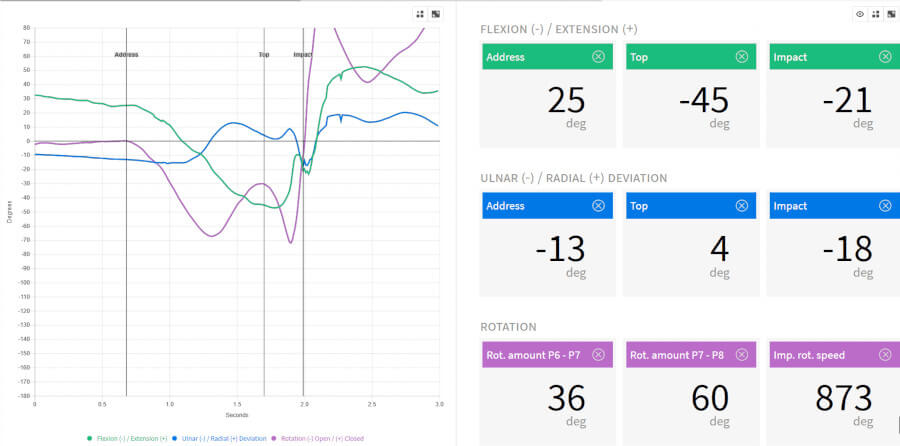
DJ vs Scratch Golfer
As a scratch golfer and a relatively consistent ball striker I thought it would be interesting to not only compare my pattern with DJ’s but also experiment with what it’s like to get into the positions he does.
I can tell you that it’s just too much flexion for me, and it does not feel comfortable at all. I do see the benefits of where he is compared to a position with too much extension; that is apparent.
I think the fact that DJ can get himself set into this position every day leaves a lot of room for him to do what he needs to through impact. I could really only get to about -10 flexion in the backswing as a maximum, nowhere near his -45, but I did feel from that position that I could fire away through impact.
It would take a lot of getting used to, but I do often wonder if I would have more consistency and better ball striking on the course if I could get to a position with a little less extension through impact.
Standard Swing
Here’s a standard swing for me; I typically don’t add much, if any, extension on the backswing, and then at impact, I get rid of almost all of it and sometimes add a slight flexion.
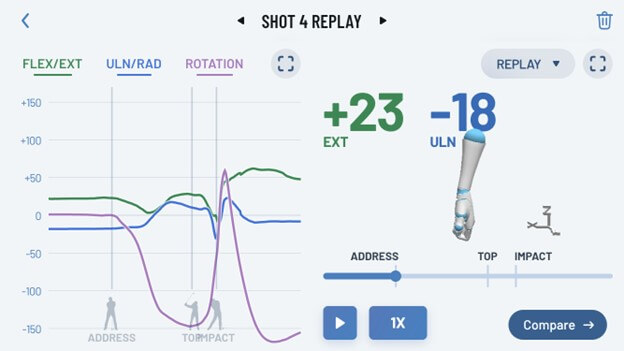

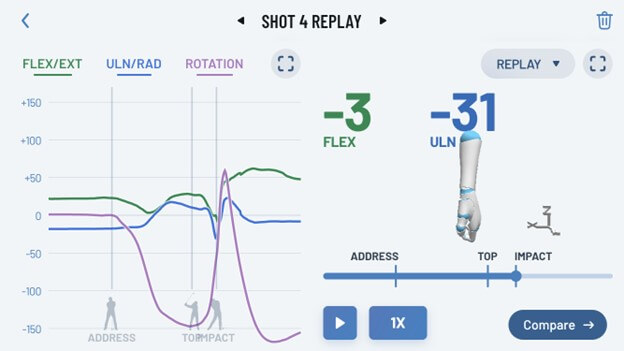
Swing Trying to be More Flexed at The Top
This is when I tried to get to Johnson’s position; you can see I do a pretty poor job of it, but my hands don’t even work the way his do! Anyway, with this position of flexion at the top, I don’t gain too much more at impact.
I think one really great takeaway here is that there is no perfect wrist position but that the consistency in wrist position and the pattern of being less extended at impact is the most significant takeaway for the average golfer.
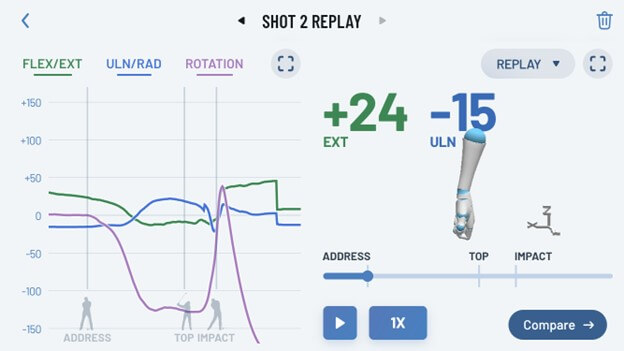
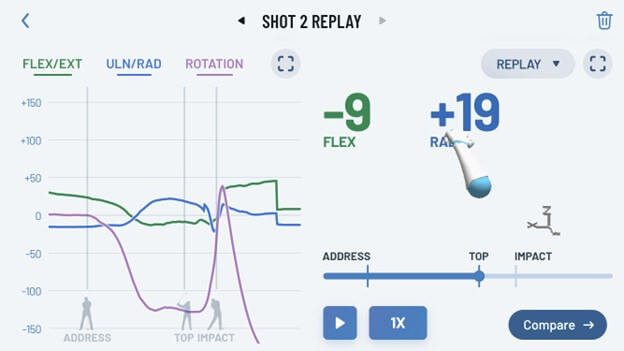
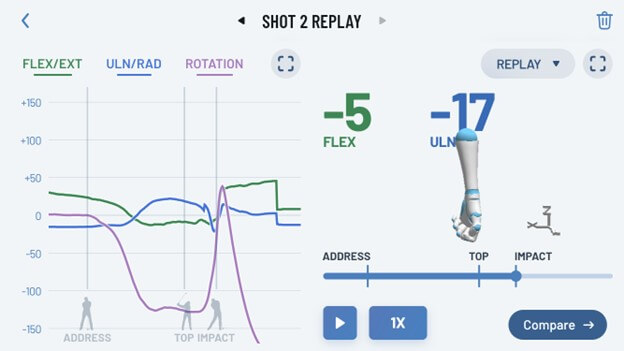
Do Any Other Golf Professionals Have as Much Flexion as Dustin Johnson?
Flexion at the top of the golf swing is not uncommon on the PGA Tour. We know that once you reach that flexed position it becomes much easier to accelerate through the ball without nearly as much manipulation of the clubhead.
If you want to work on this positioning in the swing, three other players to look out for include Jon Rahm, Collin Morikawa, and Victor Hovland.
Final Thoughts
When looking at Dustin Johnson’s golf swing, it’s easy to see that his wrist looks different at the top. However, without using HackMotion, the differences in his wrist compared to other tour professionals and other amateurs would be very difficult to measure.
HackMotion can help you fine-tune your golf game and create more consistency in your swing.
With HackMotion you can continually check on your progress and ensure you are on the right track for success; it’s like having a golf coach with you at all times.




